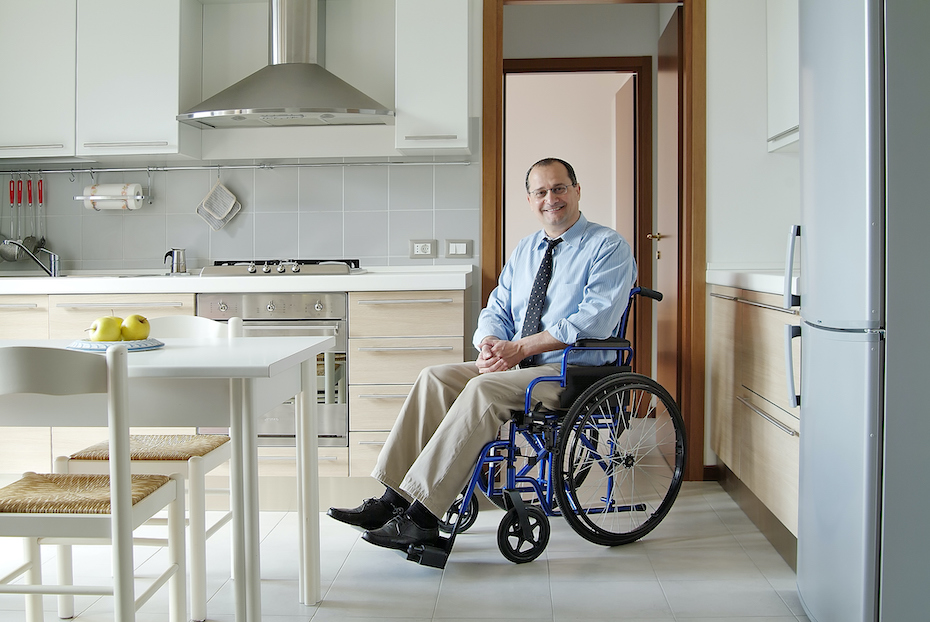In today’s fast-paced world, the need for convenience and accessibility in our homes has never been greater. One such innovation that is transforming the way we live is automated blinds for accessibility. These smart window treatments not only offer ease of use but also significantly enhance the comfort and accessibility of any living space. Whether you are a homeowner looking to improve your home automation system or someone with accessibility needs, automated blinds can be a game-changer.
Automated blinds for accessibility are designed to assist individuals in managing natural light and privacy effortlessly. This is particularly beneficial for people with mobility challenges, as it eliminates the need for manually adjusting blinds. With just a touch of a button or a voice command, you can control the amount of sunlight entering your home, providing a seamless living experience for everyone.

Understanding Automated Blinds
Automated blinds, also known as motorized blinds, are window treatments equipped with a motor that allows them to be controlled remotely. These blinds can be operated using a smartphone app, a remote control, or even integrated into a smart home system for voice control using devices like Amazon Alexa or Google Home.
How Do Automated Blinds Work?
The functionality of automated blinds revolves around a simple yet efficient motor mechanism. The motor is connected to the blind’s roller or track, enabling it to move up and down without manual intervention. This motor can be powered by electricity or batteries, making it versatile for different home setups.
Key Features of Automated Blinds
- Remote control operation
- Integration with smart home systems
- Customizable settings for light and privacy
- Energy efficiency and climate control
Benefits of Automated Blinds for Accessibility
Automated blinds offer a multitude of benefits, especially when it comes to enhancing accessibility in homes. Here are some of the key advantages:
Improved Accessibility
For individuals with mobility challenges, automated blinds provide an easy and efficient way to control light and privacy. By eliminating the need for manual adjustments, these blinds empower users to manage their environment independently.
Energy Efficiency
Automated blinds can be programmed to open and close at specific times of the day, optimizing natural light and reducing energy consumption. This not only lowers utility bills but also contributes to a more sustainable living environment.
Enhanced Security and Privacy
With automated blinds, homeowners can schedule the blinds to close when they are away, adding an extra layer of security to their homes. This feature also ensures privacy, as the blinds can be adjusted remotely at any time.
Choosing the Right Automated Blinds for Your Home
When selecting automated blinds for your home, it’s essential to consider several factors to ensure they meet your needs and preferences:
Type of Blinds
Automated blinds come in various styles, including roller blinds, vertical blinds, and Venetian blinds. Choose a style that complements your home decor and provides the desired level of light control.
Power Source
Decide whether you prefer battery-operated or electric-powered blinds. Battery-operated blinds offer a cordless setup, while electric blinds provide continuous power without the need for battery replacements.
Smart Home Integration
For a seamless smart home experience, ensure that the automated blinds you choose are compatible with your existing home automation system. This allows for integrated control and voice activation.
Installation and Maintenance of Automated Blinds
Installing automated blinds is a straightforward process, but it’s recommended to seek professional assistance to ensure proper setup and functionality. Regular maintenance, such as cleaning the blinds and checking the motor, will help prolong their lifespan and efficiency.
Professional Installation
While some homeowners may opt for DIY installation, hiring a professional ensures that the blinds are installed correctly and connected to the home automation system seamlessly.
Maintenance Tips
- Regularly dust and clean the blinds to prevent dirt buildup.
- Check the motor and power source periodically for optimal performance.
- Update the software of the smart home system to ensure compatibility.
Cost Considerations for Automated Blinds
The cost of automated blinds can vary depending on several factors, including the type of blinds, the power source, and additional features. It’s essential to budget for both the initial purchase and potential maintenance expenses.
Initial Investment
Automated blinds may have a higher upfront cost compared to traditional blinds, but the long-term benefits and convenience justify the investment for many homeowners.
Long-Term Savings
By reducing energy consumption and enhancing home security, automated blinds can lead to significant savings over time, making them a cost-effective choice for many households.
Future of Automated Blinds and Accessibility
As technology continues to advance, the future of automated blinds looks promising, with innovations aimed at further enhancing accessibility and convenience. The integration of artificial intelligence and machine learning could lead to even smarter and more intuitive blinds that adapt to user preferences and environmental conditions.
For more information on how home automation can improve accessibility, you can visit the Home Automation page.
Additionally, understanding ADA compliance is crucial for ensuring that living spaces meet accessibility standards.

Frequently Asked Questions
Are automated blinds easy to install?
Yes, automated blinds are relatively easy to install, but professional installation is recommended for optimal performance and integration with smart home systems.
Can automated blinds be controlled remotely?
Absolutely. Automated blinds can be controlled remotely using a smartphone app or integrated with a smart home system for voice control.
Do automated blinds save energy?
Yes, by optimizing natural light and reducing the need for artificial lighting, automated blinds contribute to energy efficiency and can lower utility bills.
For more insights on accessible home modifications, you can explore the Assisted Living Modifications page.
This article contains affiliate links. We may earn a commission at no extra cost to you.

